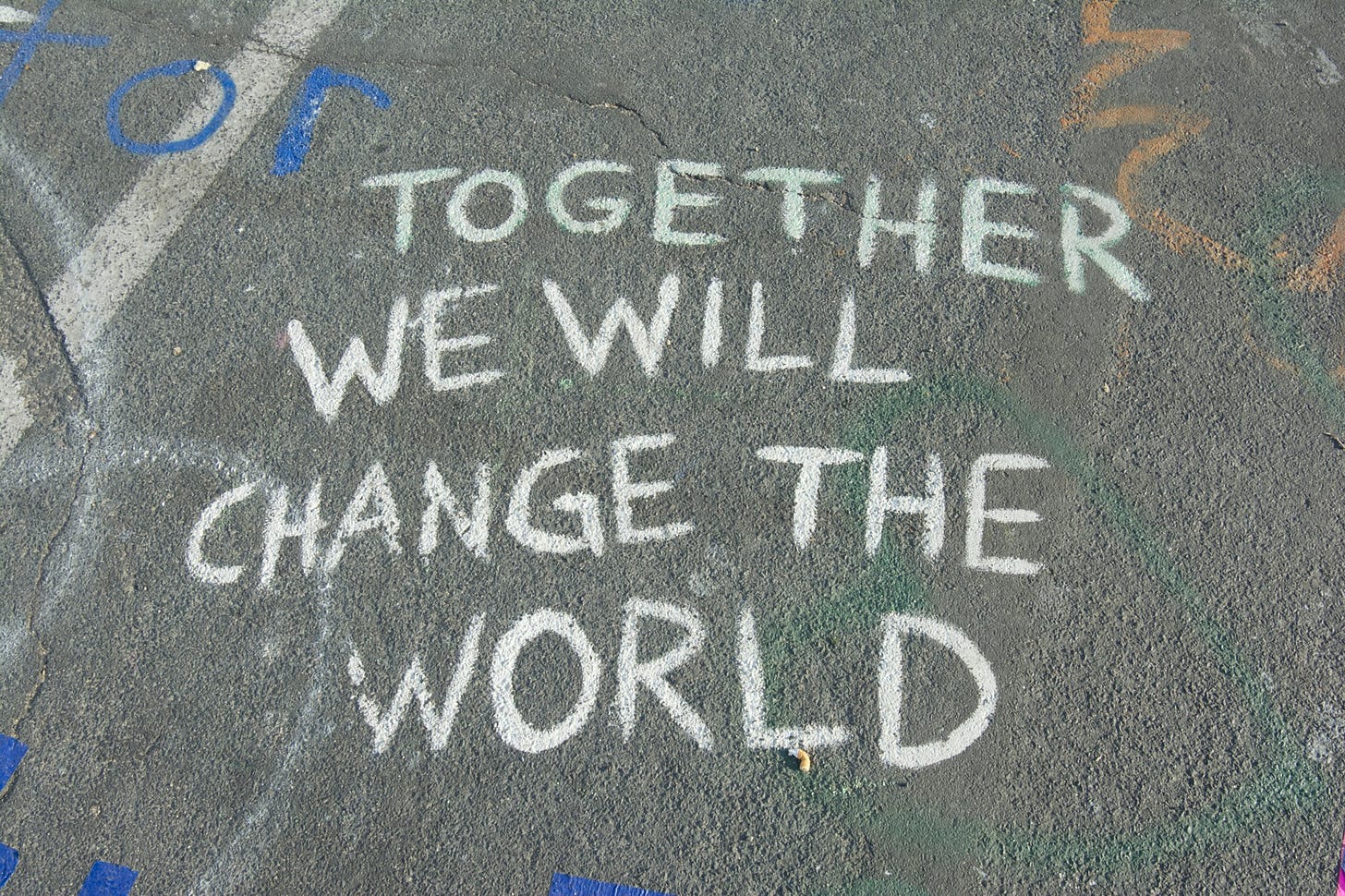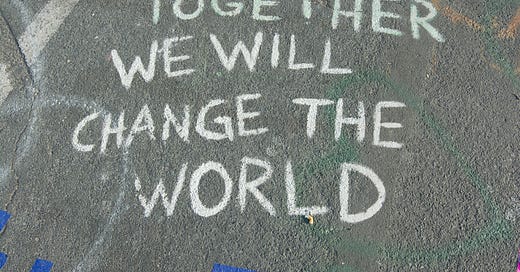Revolutionary Acts: They Found the Road to Victory

The World-Weary Missive is all about the fight for a better world.
As part of my work here I often advocate for collective action, solidarity, and networking as a means of obtaining justice and equality for people across the board. In one of my previous articles, I detail a number of ways that people can take action to do just that.
How to Become an Activist and Fight Against Injustice Today
But while I've described some how-to's, I don't think I've really demonstrated how these things can actually be put into practice. In light of that, I thought it might be interesting to talk a little bit about some historical protest movements and the tactics they used to achieve success.
For today, I thought it would be nice to hold up a small tribute to one of the greatest and most beloved figures of the Civil Rights Era in the United States- an oft-cited example when the subject of protest, civil disobedience and justice comes up.
Let's talk about Martin Luther King Jr. and the Selma to Montgomery March.
History Marches Towards Progress
Back in 1964, the Civil Rights Act was signed into law in the United States.
Civil Rights Act of 1964 - Definition, Summary & Significance
To say that this was a little bit controversial is something of an understatement.
In the Southern United States, race was a little bit of a hot button issue, and in many ways it still is. Discrimination against racial minorities was the norm, and segregation of public spaces was pretty rampant.
Back then, the reputation of the two major political parties was somewhat flipped. The South was a lock for the Democratic party, and most minorities were better represented by the Republicans. As I've written in another article, the Republicans really did used to be the Grand Old Party.
No, I Don’t Have To Respect Your Opinion
'64 was the year that changed that. It was the birth of the Southern Strategy, and the year when the two parties swapped voters. A Democratic president signing the Civil Rights Act pushed the racist vote out of Democratic hands for the first time in quite a while.
All this to say, while the Civil Rights Act did fight to end racial segregation in public spaces, there was a lot of social resentment and even legal challenges going on.
The fight to improve conditions for the Black citizens of the Southern States was a bloody one- quite literally. Several organizations were working hard to register people to vote, but in States like Alabama, they faced heavy and often violent resistance.
Enter Martin Luther King Jr.
A prominent proponent of civil rights, the Reverend had been awarded the Nobel Peace Prize for his efforts to combat prejudice and bigotry within the U.S.A.
He was the youngest winner of the Prize at the time, though that is no longer the case. The noted activist for girls' education, Malala Yousafzai, is currently the youngest holder of the Nobel Peace Prize.
Realizing that his name and presence would therefore help to increase attention for the ongoing battle, Reverend King brought his organization (Southern Christian Leadership Council) to Alabama to join forces with the local Student Nonviolent Coordinating Committee.
There was an attempt at blocking action from these organizations by means of a court injunction, which is essentially a legal order read out by a judge. In this case, the injunction barred any gathering of three or more members of various civil rights groups within Alabama, or of people associated with a long list of known civil rights leaders.
Martin Luther King's speech at Brown Chapel was in direct and purposeful disobedience of the injunction.
Following the murder of a young protester by the name of Jimmie Lee Jackson by an Alabama state trooper, the movement was galvanized into action.
Recognizing that publicity and attention would increase public pressure on the powers that be, the SCLC planned its course of action- a protest march from the town of Selma, all the way to the state capitol of Montgomery, a distance of 54 miles on foot.
Over 600 people joined the first attempt at the march. The late member of the House of Representatives, John Lewis, was among the leaders of this first march, on Sunday, March 7th, 1965. This would later become known as Bloody Sunday.
On the Edmund Pettis Bridge, the marchers were met with brutal resistance. A force of state troopers bearing weapons and tear gas met and corralled them on the old bridge and viciously beat them back, wielding nightsticks, fists and even whips.
The violence was captured on camera and televised for the whole country to see. Outraged at the ruthless brutality, the whole of America ignited with indignation.
On March 9th, more than 2000 protestors stood again at the Edmund Pettis Bridge, Black and white, Christian and Jewish, activists and regular joes. Again, they faced down the state troopers while the Reverend King led the marchers in prayer.
While the march did not continue that day, the troopers were cowed. A U.S. district judge ordered that the march be allowed to continue unimpeded.
That night there was another murder, this time a young white minister who was standing with the protestors at Selma. Local segregationists killed him for the crime of fighting against prejudice in Alabama.
March 15th, the president himself gave a speech to offer his support for the protestors at Selma, and to lend his voice in calling for a new voting rights act that would provide greater protections for Black voters across the nation.
Finally, on March 21st, the march began in earnest. Over 2000 people took to the road, protected by U.S. Army troops and National Guardsmen at the command of the President of the United States. The marchers made the entire journey on foot, sleeping rough in the fields, as a symbol of the hard road to justice for people of color.
On March 25th, they were joined by nearly 50,000 supporters in Montgomery for the final day of action.
As Martin Luther King Jr. himself proclaimed from the steps of the Alabama state capitol building, "No tide of racism can stop us!"
The Tactics of the Selma March
So, let's take a look at the Selma march and examine why it was so successful.
As with most protest movements, it all comes down to public perception. Name recognition and publicity caught the minds of the country at large, thanks to the presence of the media.
The point of a protest is to be impossible to ignore. The whole purpose is to drive the public to go after the people in charge and demand they take action on an issue. You can do that in a number of different ways- the most common routes are either to disrupt daily life and drive people to annoyance for the sake of attention, or to capture public sympathy for your cause.
Either way, people are going to pressure the government to do something.
An example of the annoyance route can be seen in some recent environmental protests wherein activists quite literally glued themselves to the glass covers of several famous paintings. As much as people rolled their eyes at them, you can't deny that they made news headlines.
Climate activists glue themselves to frames of two Goya paintings in Madrid
The marchers at Selma opted for the sympathy route, and the outrageous shooting of a young, peaceful demonstrator certainly caught the eyes of those who were predisposed to aid them in their cause.
This is not to imply that the murder of Jimmie Lee Jackson was in any way beneficial. The loss of a human life is a tragedy. But going public with the details of his murder allowed the people of the States to really empathize with how bad things were in Alabama, and it brought the issue to the forefront of a lot of minds.
A similar thing happened with the murder of young Emmett Till, which is an event that is widely credited with kicking off the Civil Rights Era.
In insisting on an open casket funeral, in spite of the state of her son's remains, Mamie Till held up the reality of lynching to the world. Even children weren't safe. In refusing to sugarcoat the crime, she denied observers the chance to distance themselves.
She stood up in front of the world and said, "I will not allow you to ignore this any longer!"
We see it again in the modern Black Lives Matter protests, wherein the murders of George Floyd, Breonna Taylor and dozens of other Black people at the hands of police have become catalysts for mass protests- not just in the States, but around the world.
When suffering and oppression is given a human face, a name, and a life story, you can't detach from it anymore.
Likewise, televising Bloody Sunday and the attack on peaceful marchers provided a window for the rest of America, allowing them to see what the Black citizens of the South were up against. It's hard to watch violence like that and not feel fired up to do something.
During the recent protests against police brutality, many demonstrators took to filming the clashes with police and posting them across social media. Refusing to allow the media to spin the story to a less raw version helped keep the message of the movement clear: lives are at stake, and people are being oppressed.
On the whole, humans are generally cooperative. We're social animals, and we naturally empathize with each other in the face of disaster.
It's the same reason advertisers, propagandists and even charity organizations aim to hit you right in the heartstrings- we act when our emotions are engaged, and we don't act when we feel apathetic.
Ideally, activism will not involve violence. It's great if you can avoid it, and you absolutely should do whatever you can not to get into a fight. But even something as simple as reaching out to people that are personally harmed, asking them to record their stories and share them, can help swing the tide in the court of public opinion.
Beyond that, the most important thing that the marchers of Selma did was refuse to break.
They persevered, even in the face of violence and threats. They knew that if they failed, things were not going to get better- they might even get worse. So, in spite of the risk, they kept up their pressure. They kept turning up, they kept getting walloped, and they kept coming back anyway.
And every time they did, their crowd got bigger.
Always remember, the more people you have on your side that are willing to come out and say so, the more of a bullhorn you have. You should never underestimate the power of a thousand voices speaking as one.
Activism in unity is activism that succeeds.
Solidarity wins.


